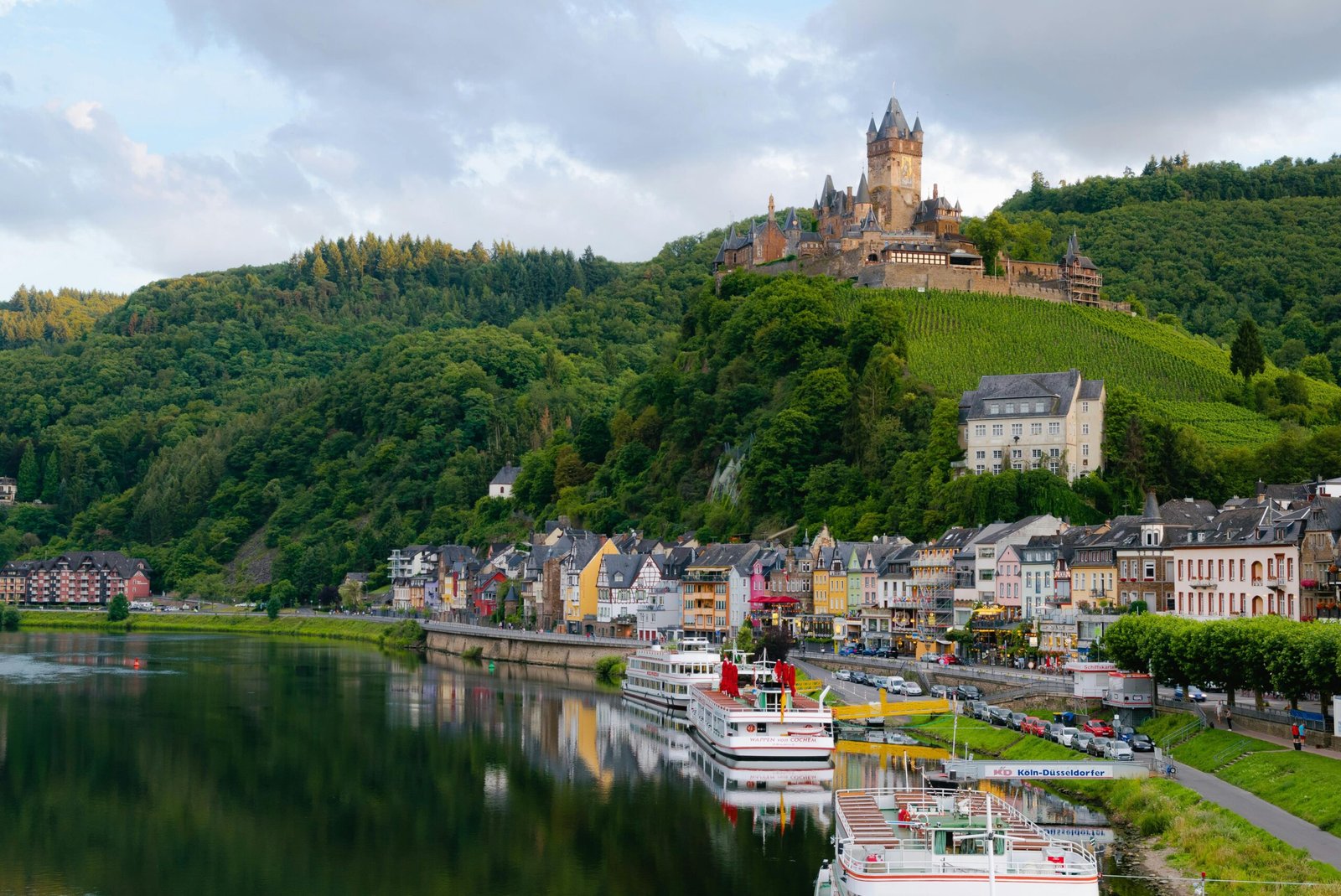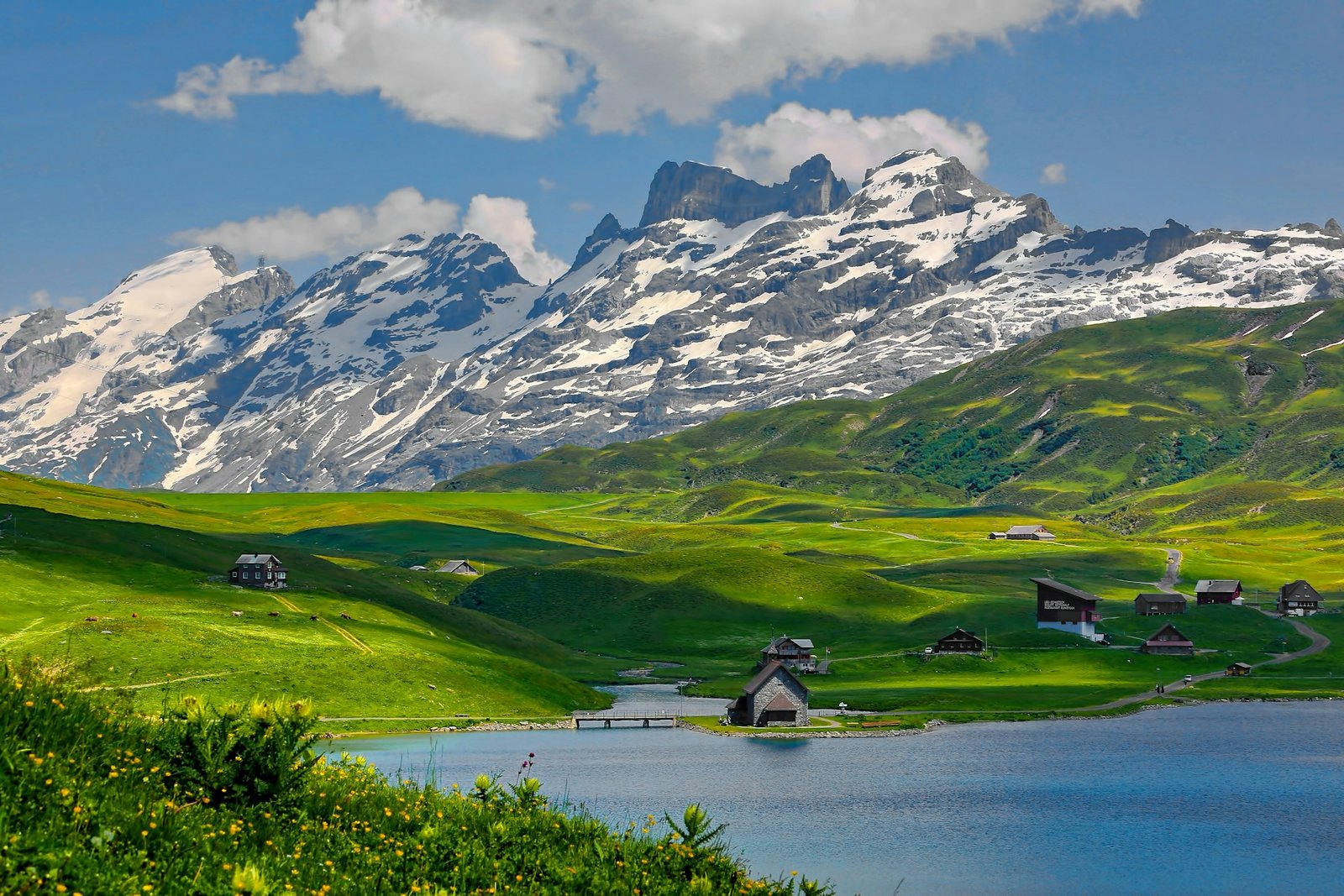Exploring Europe doesn’t have to come with a high price tag. In fact, some of the most unforgettable experiences are entirely free. From world-renowned museums and historic landmarks to vibrant street art and local markets, there are countless free things to do in European cities that let you dive right into the culture without spending a cent. I’ve seen firsthand how these experiences can make a trip more authentic—whether it’s a free walking tour that uncovers hidden stories or a local festival that immerses you in the city’s pulse.
In this guide, you’ll discover the best free activities in European cities, crafted for every type of traveler. We’ll explore iconic sights, secret spots, and budget-friendly tips to help you get the most out of each city. Whether you’re planning your first trip to Europe or looking to travel smarter, this list is packed with practical insights and hidden gems you won’t want to miss. Get ready to experience Europe’s top attractions, all for free!
Quick Guide for Busy Readers
Looking to make the most of free things to do in European cities without spending too much time planning? Here’s your at-a-glance guide to top budget-friendly European travel tips!
Essential Free Activities:
- Explore Museums: Many world-class museums offer free entry on specific days. Don’t miss the Louvre (first Saturday of each month), British Museum (free always), or Reina Sofia Museum in Madrid (certain hours).
- Join Free Walking Tours: Try Sandeman’s New Europe tours or Free Tour Stockholm for a local’s take on the city.
- Visit Parks and Gardens: Relax at Retiro Park in Madrid, Vondelpark in Amsterdam, or Munich’s English Garden.
Budget Travel Tips:
- Timing is Key: Visit during shoulder seasons (spring/fall) to avoid crowds and enjoy free museum days and events.
- Mix Free with Paid Experiences: Pair free activities with occasional paid experiences (like a local food tour) for a balanced trip.
- Transport Hacks: Use city passes, opt for bike rentals, and book budget flights or trains in advance for cheap transit.
Best Times to Visit:
- Summer for festivals, outdoor events, and street performances.
- First Sundays of the Month in cities like Paris for free museum entries.
Quick Picks:
- Top Free Attractions: Charles Bridge in Prague, Piazzale Michelangelo in Florence, and East Side Gallery in Berlin.
- Hidden Gems: Unique neighborhoods like Trastevere in Rome and Montmartre in Paris offer free sights, street art, and lively atmospheres.
This quick guide gives you a head start on planning a European adventure that’s high on experience but low on cost.
Top 20 Free Things to Do in European Cities
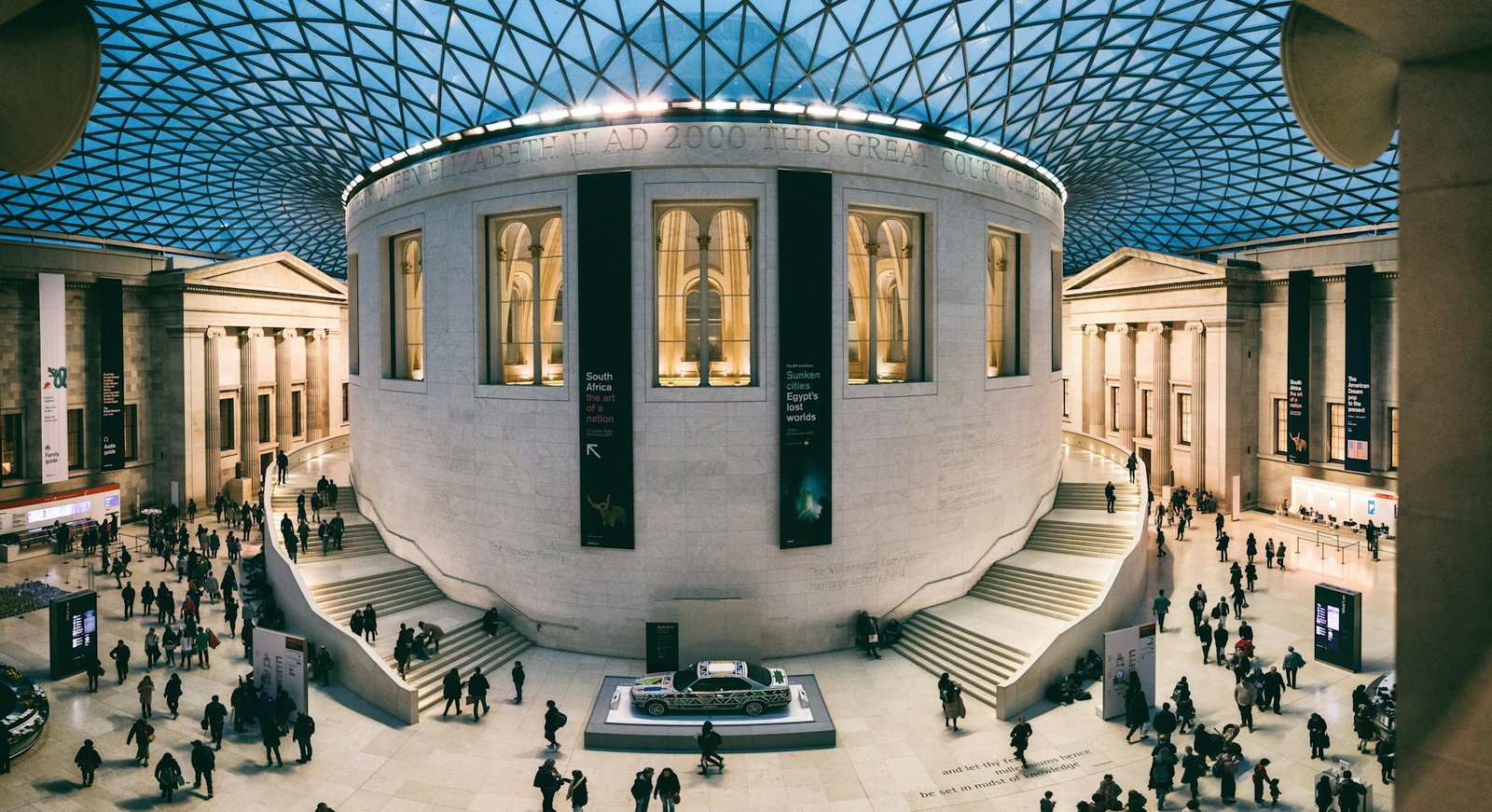
1. Explore World-Class Museums
Europe is packed with museums that offer glimpses into history, art, and culture—all for free at certain times. Many famous spots waive entry fees on specific days or during particular hours, making it easier to enjoy the best free activities in European cities.
- Louvre, Paris: Visit on the first Saturday of each month to experience the world’s largest art museum without the ticket cost. I find this an amazing way to see iconic pieces, including the Mona Lisa, while saving some euros.
- British Museum, London: Completely free to explore year-round, this museum holds the Rosetta Stone and an incredible collection of historical artifacts. No one should skip this—its rich collection is one of the top free attractions in Europe.
- Reina Sofia Museum, Madrid: Free during select evening hours, where you can see works by Picasso and Dalí. A visit here offers a profound glimpse into Spanish modern art without a fee.
2. Join Free Walking Tours
Walking tours reveal a city’s personality through the eyes of locals. They’re often pay-what-you-can (though tips are appreciated), and they create memorable ways to understand a city’s heart.
- Sandeman’s New Europe Tours: Available in cities like Paris, Berlin, and Amsterdam, these tours give you local insights and historical anecdotes. I love these for their passion and energy.
- Free Tour Stockholm: Discover Stockholm’s old town, Gamla Stan, and get a sense of the city’s history and charm.
- Free Walking Tour Budapest: An excellent way to explore Buda Castle and other key landmarks while learning fascinating stories about the city’s complex past.
3. Witness Stunning Architecture
European cities are like open-air museums, and often, the best way to take in their beauty is simply by walking and looking up.
- Sagrada Familia exterior, Barcelona: Even without going inside, Gaudí’s masterpiece impresses with its intricate facades and towering spires. Walking around it gives a sense of the architect’s vision.
- St. Peter’s Basilica, Rome: An architectural gem. Just viewing the basilica from St. Peter’s Square offers an awe-inspiring experience for free.
- Charles Bridge, Prague: This historic bridge, lined with statues, offers sweeping views of the city. I highly recommend a sunrise visit for a quieter, magical experience.
4. Relax in Urban Parks and Gardens
Green spaces in European cities are perfect for a budget-friendly day out. Relaxing in these parks provides a nice break from sightseeing and a taste of local life.
- Retiro Park, Madrid: Enjoy a tranquil escape with sculptures, gardens, and even a crystal palace—all free to enjoy.
- Vondelpark, Amsterdam: A favorite among locals and tourists, this park is ideal for picnics, bike rides, or simply people-watching.
- English Garden, Munich: One of the largest urban parks in Europe, complete with a beer garden and surfable river. Perfect for experiencing Munich’s laid-back lifestyle.
5. Experience Local Markets
Markets showcase a city’s culture and flavor. You don’t need to buy anything to soak in the vibrant atmosphere and local vibes.
- Borough Market, London: Sample free food, see unique stalls, and watch local artisans at work.
- Naschmarkt, Vienna: Known for fresh produce and quirky stalls, it’s a lively spot to stroll and sample Austrian flavors.
- La Boqueria, Barcelona: A sensory overload of colors, smells, and sounds. Great for exploring the essence of Catalonia.
6. Attend Free Festivals and Events
Europe hosts numerous free festivals that offer immersive cultural experiences, especially during the summer months.
- Nuit Blanche, Paris: Held annually, this all-night arts festival turns the city into a giant art gallery with free exhibits and performances.
- Carnival of Venice: Witness the colorful costumes and masks, enjoy the parade, and take part in this centuries-old tradition.
- Edinburgh Fringe Festival (free shows): In August, Edinburgh bursts with creative energy. Many Fringe events have free admission, making this a budget-friendly choice for arts enthusiasts.
7. Enjoy Street Performances
Street performers add charm to European cities, transforming popular areas into live entertainment hubs.
- Covent Garden, London: Known for its musicians, acrobats, and entertainers, Covent Garden is a vibrant experience in the heart of London.
- Las Ramblas, Barcelona: Street performers line this famous avenue, offering everything from music to unique costume art.
- Piazza Navona, Rome: Alongside beautiful fountains, you’ll find artists, mimes, and musicians giving lively performances.
8. Visit Historic Churches and Cathedrals
Historic churches are often free to enter, and they reveal the architectural grandeur and artistry of Europe.
- Notre-Dame Cathedral, Paris: Though interior access is limited due to restoration, the exterior remains a breathtaking sight.
- St. Stephen’s Basilica, Budapest: Known for its grand dome and stunning views. Entry is free, with donations accepted.
- Cologne Cathedral, Germany: A UNESCO site, this Gothic cathedral’s intricate architecture is awe-inspiring.
9. Discover Free Art Galleries
Many European cities offer free entry to art galleries, showcasing both classic and contemporary masterpieces.
- National Gallery, London: Houses works by Van Gogh, Da Vinci, and Botticelli, making it one of the top free art destinations in Europe.
- Berlinische Galerie, Berlin (first Monday of the month): This modern art museum lets visitors in for free once a month.
- Modern Art Museum, Paris: The permanent collection is always free and a must-see for contemporary art lovers.
10. Take in Panoramic City Views
For city views that won’t break the bank, Europe has countless lookout spots with amazing perspectives.
- Primrose Hill, London: This hill offers sweeping views of London’s skyline—an ideal picnic spot, too.
- Montjuïc, Barcelona: Hike up for views over the city and harbor; it’s a serene spot away from the hustle and bustle.
- Piazzale Michelangelo, Florence: Enjoy breathtaking views of Florence’s red rooftops and the iconic Duomo. Best at sunset!
11. Explore Street Art and Graffiti
European cities are home to vibrant street art scenes, often in neighborhoods known for their edgy, creative atmospheres. These open-air galleries offer a unique look at local culture and activism.
- East Side Gallery, Berlin: This iconic stretch of the Berlin Wall is covered in colorful murals, each telling a story of freedom and unity. It’s a must-visit and one of the best free attractions in Europe.
- Exarchia, Athens: Known for its political murals and raw graffiti, this neighborhood showcases Athens’ revolutionary spirit and creativity.
- Shoreditch, London: Famous for street art by artists like Banksy, Shoreditch’s vibrant walls bring together some of the most unique, free public art displays in the city.
12. Visit Free Museums
Along with major museums, many smaller institutions across Europe offer free admission, making them hidden gems for budget-conscious travelers.
- Naturhistorisches Museum, Vienna: Free on the first Wednesday of the month, this museum offers a look at natural history collections from around the world.
- Musée Carnavalet, Paris: Dedicated to the history of Paris, this museum is always free, showcasing everything from ancient artifacts to French Revolution memorabilia.
- National Museum of Scotland, Edinburgh: With exhibits covering everything from Scotland’s history to natural sciences, this museum is free every day and perfect for families and history lovers.
13. Enjoy Beach Activities
Europe’s beaches offer a refreshing escape, whether you want to relax, swim, or people-watch. Many city beaches are well-kept, easily accessible, and completely free.
- Barceloneta Beach, Barcelona: Located near the city center, this lively beach is a great spot for sunbathing, volleyball, or enjoying street performers.
- Plage de la Croisette, Cannes: Known for its iconic festivals, Cannes also has beautiful, free-access beaches perfect for a day of lounging on the French Riviera.
- Bogatell Beach, Barcelona: Less crowded than Barceloneta, Bogatell offers a peaceful atmosphere and is ideal for a relaxing day by the sea.
14. Participate in Free Fitness Classes
Many European cities offer free fitness classes, especially during the summer. These sessions let you keep up with your exercise routine while enjoying a new city.
- Yoga in the Park (various cities): Cities like Paris, London, and Berlin host free yoga classes in major parks during warmer months.
- Outdoor Gym Equipment in Public Parks: From Copenhagen to Lisbon, you’ll find outdoor gym equipment in city parks, perfect for a quick workout.
- Group Runs and Jogging Meetups: Join local running clubs or check apps like Meetup to find free jogging meetups for an active, social experience.
15. Attend Free Music Performances
Europe’s cultural hubs frequently host free concerts, especially in historic venues and parks, allowing you to enjoy world-class music without a ticket.
- Concerts at St. Martin-in-the-Fields, London: This iconic church offers free lunchtime concerts, often featuring classical music and choral performances.
- Jazz Concerts in Parc Floral, Paris: During summer, you can catch free jazz concerts here, making it a serene spot for an afternoon outing.
- Free Classical Concerts in Various European Cities: Check local listings for seasonal classical performances in cities like Vienna, Prague, and Budapest. Many cathedrals and parks offer free events for music lovers.
16. Explore Unique Neighborhoods
Each European city has unique neighborhoods brimming with character and history. Wandering through these areas gives you a local experience and a sense of the city’s true spirit.
- Trastevere, Rome: Known for its charming cobbled streets and vine-covered buildings, this neighborhood feels like a step back in time. It’s also a great spot for street performers and local artisans.
- Montmartre, Paris: The historic artists’ district, Montmartre’s quaint streets and bohemian vibe offer plenty to explore for free. Be sure to visit the steps of Sacré-Cœur for a panoramic view of Paris.
- Kreuzberg, Berlin: This hip, multicultural neighborhood is filled with street art, quirky shops, and an alternative Berlin vibe that’s best experienced by simply walking around.
17. Visit Free Government Buildings
Some of Europe’s government buildings open their doors to the public, often free of charge. These buildings aren’t just for sightseeing—they’re windows into the region’s political and cultural history.
- Houses of Parliament, London (UK residents): UK residents can attend parliamentary debates for free. For non-residents, it’s still worth seeing from the outside for its stunning Gothic architecture.
- Reichstag Building, Berlin: With advance registration, you can access the glass dome and terrace of the Reichstag, offering insights into Germany’s government and panoramic views of Berlin.
- Palazzo Pubblico, San Marino: This government palace in the microstate of San Marino offers free access to many areas, giving visitors a unique look at European history.
18. Enjoy Free Library Tours and Resources
Libraries across Europe aren’t just for reading—they’re also beautiful, historic places to explore. Some even offer free tours, perfect for history buffs and architecture lovers.
- Vatican Library, Rome (limited tours): While only open to a select few on rare occasions, it’s worth checking for public tour options to explore this legendary library’s rare manuscripts.
- British Library, London: Free to visit, this library holds historical treasures like the Magna Carta. I recommend the Treasures Gallery for a look at priceless documents from history.
- National Library of France, Paris: This elegant library often offers exhibits and collections free to explore, giving a unique glimpse into French literature and history.
19. Participate in Free Walking Clubs
Many cities have walking clubs that welcome newcomers. Joining one of these clubs lets you meet locals while discovering hidden parts of the city.
- IVV Walks in Various European Countries: The IVV (Internationaler Volkssportverband) organizes free group walks across Europe, making it easy to connect with others while exploring scenic routes.
- Meetup Hiking Groups: Many European cities have hiking and walking groups on Meetup that are open to all. It’s a fun, social way to explore new areas at no cost.
- City-Specific Walking Clubs: Cities like Stockholm and Vienna have their own free walking clubs, where you can walk through neighborhoods with a group while learning about the local history.
20. Take Advantage of Free City Cards for Kids
Many European cities offer free city cards for children or special discounts that allow free access to popular attractions.
- Copenhagen Card: Free for kids up to 10 years old when accompanied by an adult. This pass includes access to several top attractions, making it budget-friendly for families.
- I Amsterdam City Card: While the card itself has a cost, certain attractions offer free entry for kids or discounts, making it worthwhile if you’re traveling with family.
- Oslo Pass: Includes free access to many museums and attractions for children. For parents, it’s a great way to keep costs down while seeing more of the city.
These activities cover an incredible range of free things to do in European cities, perfect for budget-conscious travelers who want to experience Europe’s diverse cultures and traditions without spending too much. From historic sites to vibrant neighborhoods and scenic spots, there’s no shortage of ways to make unforgettable memories on a budget.
Why Free Activities Matter for European Travelers
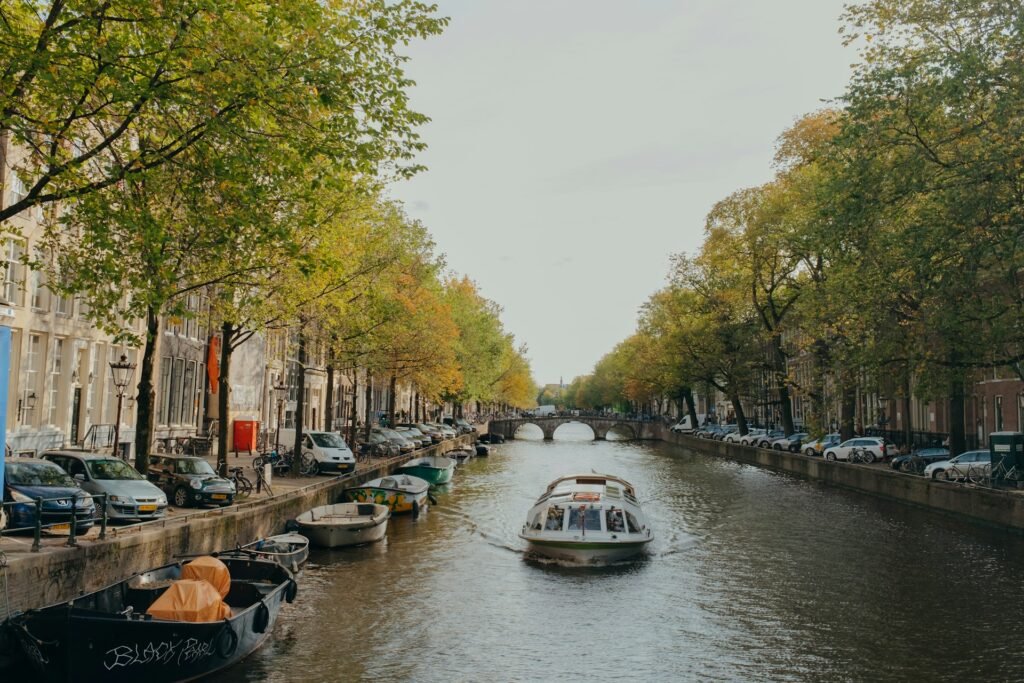
When you travel around Europe, free activities aren’t just about saving money; they’re essential for creating a meaningful, well-rounded experience. Here’s why these top free attractions in Europe are so important for travelers:
Budget Considerations
Europe’s famous landmarks and cultural activities can add up quickly. This is why budget-friendly European travel tips often highlight free activities, helping travelers make the most of their trips without breaking the bank. Whether you’re backpacking or just traveling on a tighter budget, these free experiences allow you to stretch every dollar and prioritize other parts of your journey, like trying local cuisine or booking accommodations in unique areas.
The best part? Europe’s free attractions are often just as memorable as the paid ones. From free museum days in Paris to stunning architecture in Prague, you can dive into culture and history without spending a euro. The takeaway? Plan your itinerary around key free days and open-access locations for maximum value.
Authentic Local Experiences
Free activities frequently offer travelers an unfiltered look at local life. Public parks, street markets, and local festivals put you right in the heart of daily routines and traditions, letting you experience the culture naturally. When you visit places like a Sunday market in Amsterdam or a beach in Barcelona, you aren’t just sightseeing—you’re blending into the local community and seeing Europe as residents do.
These experiences also tend to be more relaxed, giving you a genuine connection to the city. Unlike popular tourist attractions, which can feel crowded and rushed, free spots are often low-key spaces where locals hang out. The goal here is simple: slow down and enjoy Europe’s local culture.
Sustainability and Responsible Tourism
Free activities are often low-impact options, which makes them a great choice for sustainable travel. Exploring parks, attending open-air festivals, or walking through historic neighborhoods requires minimal resources and helps preserve these areas. By engaging in responsible tourism, you’re not only saving money but also minimizing your environmental footprint.
Also, choosing to support local artisans at free markets or watching street performances is a small but impactful way to give back. In short, top free activities in European cities offer travelers a responsible way to explore, connect, and contribute.
Tips for Maximizing Free Experiences in European Cities
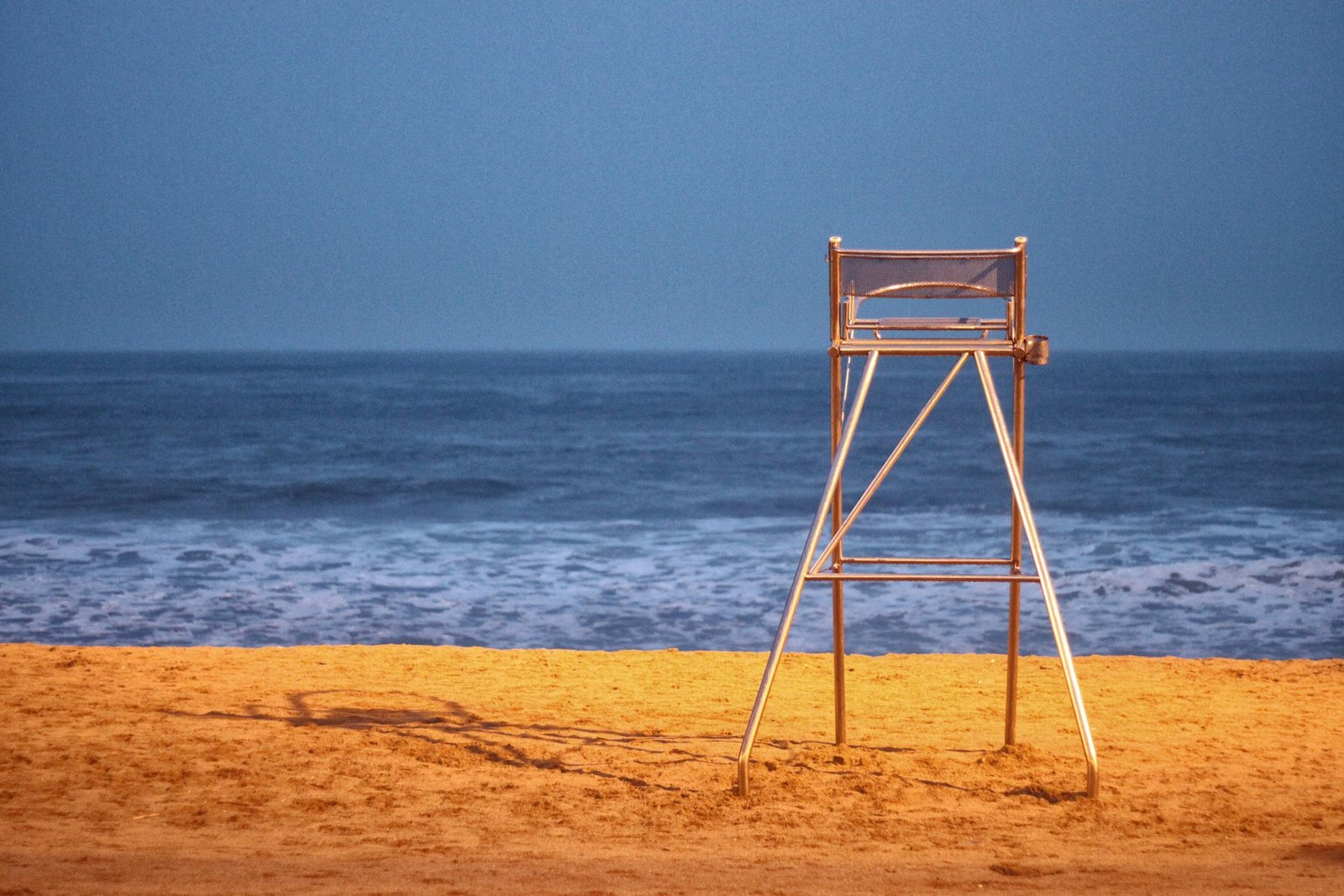
Europe offers countless free things to do, but planning ahead helps you get the best out of every opportunity. Use these simple tips to unlock even more of Europe’s free offerings and make your experience smooth and memorable.
Research City-Specific Free Days and Times
Many museums, galleries, and historic sites across Europe offer free admission on specific days or at particular hours. This little-known fact can save you a lot, especially if you’re flexible with timing.
- For example: The Louvre in Paris is free on the first Saturday of each month, and Madrid’s Reina Sofia Museum offers free hours each afternoon.
- Before you go, research “free entry days” for your target city, and consider aligning your travel itinerary to include these times. Check local websites or tourism boards for updated schedules, especially since some free days vary seasonally.
Look for Student and Youth Discounts
Europe is incredibly student-friendly, with a large number of museums, events, and attractions offering student discounts—and some of these are free with valid student IDs. Even if you’re not a student, young travelers (usually under 26) can often get discounts or free access on specific days.
- Always carry an ID if you’re eligible, and look up “youth access” or “student admission” for each city you plan to visit. For instance, students can access certain areas of the British Museum for free and find discounts on other paid exhibits.
- Tip: An International Student Identity Card (ISIC) can help if you’re a student and plan to travel across multiple countries.
Utilize Free City Wi-Fi for Planning on the Go
Wi-Fi networks across Europe are becoming increasingly available, especially in main tourist areas, museums, cafes, and even city centers. Free Wi-Fi allows you to quickly find the nearest free spots, check opening hours, or download city maps, saving you both time and data charges.
- Cities like Paris, Barcelona, and Vienna offer extensive free Wi-Fi zones, particularly in public squares and tourist hubs. Many cities even have dedicated apps to help you find free spots in real time.
- Practical Tip: Download essential apps, maps, and itineraries in advance, but use Wi-Fi for last-minute searches. That way, you’ll avoid roaming fees and always have resources on hand.
These practical tips not only help you find the best free activities in European cities, but they also allow you to connect with local culture and save valuable travel funds for experiences that matter most to you.
Planning Your Budget-Friendly European Adventure

Ready to make the most of the best free activities in European cities? With a few simple tips, you can turn any European trip into a budget-friendly adventure full of unforgettable moments. Here’s how to maximize your travel time and keep costs down while exploring Europe.
Best Times to Visit for Free Activities
When it comes to free things to do in European cities, timing can be everything. Many popular museums, galleries, and cultural sites offer free entry on specific days, usually during off-peak times. This means that visiting during shoulder seasons (spring and fall) can help you experience these free days with fewer crowds and often milder weather.
- Key tip: Plan for free museum days like the first Sunday of each month in Paris or the last hour of the day at the Reina Sofia in Madrid.
- Summer festivals, which bring free events, open-air concerts, and street fairs to cities across Europe, are also worth considering. Example: The Edinburgh Fringe Festival has countless free shows in August.
Combining Free Activities with Paid Experiences
It’s all about balance. By mixing top free attractions in Europe with a few paid experiences, you get the best of both worlds. Spend mornings exploring iconic free sights, like London’s National Gallery or Rome’s historic churches, then splurge on a unique local experience—like a wine-tasting tour in Florence or an authentic meal in Barcelona.
- Example itinerary: In Amsterdam, start the day with a free walking tour, enjoy a low-cost canal cruise, then finish with a sunset view from one of the free spots along the Amstel River.
- Pro tip: Use free events as your anchor activities, then budget around them. With enough planning, your paid experiences can complement the free ones perfectly, giving you a well-rounded itinerary without overspending.
Transportation Tips for Getting Around Cheaply
Navigating European cities doesn’t have to be expensive. Knowing the local transportation hacks can save both time and money, especially when you’re moving between neighborhoods and cities.
- Public Transit Passes: Most major cities offer short-term travel passes that can save you a lot if you’re using public transport daily. For example, the Paris Visite pass or Berlin’s Welcome Card offer unlimited rides for a set period, which is great for budget travelers.
- Bikes and Walking: Europe’s cities are often compact and highly walkable, with bikes available for rent cheaply or even for free in certain areas. Copenhagen, Amsterdam, and Berlin are especially bike-friendly.
- Budget Flights and Trains: For longer distances, book in advance with budget airlines or regional train services for the lowest fares. Use tools like Omio and Trainline to compare prices and find deals.
Conclusion

Europe has an incredible range of budget-friendly travel options that let you experience the continent’s rich culture, history, and daily life without overspending. From world-famous museums and historic churches to local markets and street festivals, the possibilities for free things to do in European cities are as varied as they are exciting. You can stroll through iconic neighborhoods, marvel at grand architecture, and enjoy live street performances, all without spending a cent.
The beauty of budget travel in Europe is that it’s about more than just saving money—it’s about connecting with the city like a local. So as you set out on your European adventure, embrace these top free attractions in Europe, and don’t be afraid to discover even more along the way. Every city has its hidden gems, and with a little curiosity, you’ll find that some of the best moments often come from the most unexpected (and free!) experiences.
Happy exploring—and remember, Europe has a world of free experiences waiting for you to uncover.
FAQ: Free Things to Do in European Cities
The best free activities in European cities include exploring iconic landmarks, visiting free museums (like London’s British Museum or the Rijksmuseum Garden in Amsterdam), and strolling through historic neighborhoods such as Paris’s Montmartre. Additionally, many cities host open-air concerts and cultural festivals that offer unique, budget-friendly European travel experiences.
Yes, many top museums across Europe offer free entry. For example, London’s Tate Modern and the British Museum have free access year-round, while major museums like the Louvre in Paris and the Prado in Madrid have designated free entry days. Checking the schedules online in advance can help you plan your museum visits around free days.
European cities often have affordable or free transit options. For example, trams in Amsterdam are free for certain routes, and Prague’s metro offers discounted multi-day passes. Use apps like Rome2Rio to explore public transportation routes, and consider walking tours for both sightseeing and cost-saving benefits.
Top free attractions in Europe include Rome’s Pantheon, Berlin’s Brandenburg Gate, and the Seine River in Paris. Many of Europe’s iconic sites, such as Prague’s Charles Bridge and Budapest’s Fisherman’s Bastion, can be enjoyed without any entry fees, making them ideal for budget-friendly exploration.
Yes, Europe hosts numerous free cultural events and festivals. In June, Paris’s Fête de la Musique fills the streets with live music, and Florence’s Festa della Rificolona in September offers traditional music and food. Check city tourism websites for seasonal event updates to experience Europe’s lively festival culture for free.
Markets and local bakeries offer some of the best budget-friendly food options. Cities like London’s Borough Market and Madrid’s Mercado de San Miguel are great for affordable eats. Many European cities also have parks and scenic areas perfect for picnics, letting you enjoy local flavors without the expense of dining out.
For a budget-friendly day exploring Europe, pack a reusable water bottle, a light snack, a power bank, comfortable walking shoes, and a small backpack. Bring a city map or download a map app to access free tour routes, and don’t forget a picnic blanket for spontaneous park stops, which are often among the top free attractions in Europe.

